This article was co-authored by Pippa Elliott, MRCVS. Dr. Elliott, BVMS, MRCVS is a veterinarian with over 30 years of experience in veterinary surgery and companion animal practice. She graduated from the University of Glasgow in 1987 with a degree in veterinary medicine and surgery. She has worked at the same animal clinic in her hometown for over 20 years.
There are 10 references cited in this article, which can be found at the bottom of the page.
wikiHow marks an article as reader-approved once it receives enough positive feedback. In this case, 88% of readers who voted found the article helpful, earning it our reader-approved status.
This article has been viewed 67,190 times.
Like human beings, guinea pigs are not able to produce their own Vitamin C. If they are not fed a sufficient quantity of Vitamin C, they will develop a deficiency and fall ill. Guinea pigs need about 10mg/day per pound of body weight; that rises to 30mg/day per pound of body weight during pregnancy.[1] There are several methods for incorporating enough Vitamin C in your guinea pig’s diet.
Steps
Incorporating Vitamin C into your Guinea Pig’s Diet
-
1Don’t rely on hay and grass alone. Although timothy hay, other hays, grasses, and alfalfa are the foundation of a guinea pig’s diet, they are low in Vitamin C. [2] Supplementation of some kind is necessary.
-
2Choose a guinea pig food pellet that includes Vitamin C. Premium foods designed for guinea pigs will include Vitamin C, which is added during the manufacturing process.
- Don’t store the food pellets for more than a month. Vitamin C degrades over time. While it will last up to three months in normal conditions, it may degrade faster in hot or humid weather.
- Follow the feeding instructions provide with the food. In general, guinea pigs will eat about 1/8 cup of pellets per day, supplemented by hay and vegetables.[5]
- Avoid brands of pellets that include sugar, seeds, or colourful pieces. These additional food pieces are high in sugar, which makes them unhealthy. They also discourage guinea pigs from eating their pellets. Plain oxbow pellets are best.
- Do not feed your guinea pig rabbit food. Choose a pellet brand that focuses solely on a guinea pig's dietary needs. Most rabbit foods do not include vitamin C.
Advertisement -
3Feed your guinea pigs bell peppers daily. Red bell peppers, otherwise known as capsicums, are high in vitamin C and are one of the only vegetables that can be fed every day. Yellow and green bell peppers can also be fed, but contain less vitamin C to red varieties.[6]
-
4Add leafy greens to your guinea pig’s diet. Dark, leafy greens such as kale, parsley, cabbage, spinach, chicory, lambsquarter, and dandelion greens provide a good source of Vitamin C. If you feed dandelion greens or lambsquarter, be careful not to harvest ones from lawns that have been treated with pesticides, fertilizers, or herbicides.[7]
- Leafy greens should be the main vegetable supplement for your guinea pig. Provide 2-3 leaves of various leafy greens each day.
-
5Feed fruits and other vegetables to your guinea pig as a treat. Cucumbers, guava, broccoli, cauliflower, strawberry, peas, tomatoes, and kiwi are good sources of Vitamin C for guinea pigs.
- Vegetables and fruits can be offered a few times a week. Since fruits are high in sugar, these should be given more sparingly.
-
6Never give your guinea pig poisonous foods. Common fruits and vegetables that are poisonous or dangerous for your guinea pig include cereals, grains, nuts, corn kernels, beans, onions, potatoes, beets, rhubarb, and pickled foods. [8] If your guinea pig seems unwell after eating a treat, discontinue feeding that treat.
-
7Limit certain vegetables to 1-2 times week. Various vegetables contain different amounts of vitamins and nutrients. Some vegetables, while healthy for guinea pigs, can cause dietary issues if fed in high amounts. For example, high-calcium vegetables that are fed too often can cause bladder stones. Nutrient-deficient vegetables, such as lettuce, can cause diarrhoea and bloating if fed in excess amounts. For a reliable chart of vegetables types, visit https://cvm.ncsu.edu/wp-content/uploads/2016/12/Caring-for-your-Guinea-Pig.pdf
- Lettuces such as cos, romaine, and butterhead should be limited to 1-2 times a week, as they contain little nutrient value, and can cause bloating, diarrhoea and an upset stomach if fed in excess amounts. Iceberg lettuce should not be fed at all.
- Broccoli, cauliflower and brussel sprouts should be limited to 1-2 times a week, as they can cause bloating.
- High calcium vegetables, such as kale and spinach, should be limited to a few leaves every 2-3 weeks. Large amounts of calcium in their diet can lead to bladder stones.
Administering Vitamin C Supplements
-
1Feed specially designed Vitamin C tablets directly to your guinea pig. These are supplements designed to appeal to your guinea pig by resembling a treat. Be sure not to use supplements after their expiration date, since they are unlikely to have sufficient active Vitamin C by that point.
-
2Offer Vitamin C tablets or liquids designed for children.[9] Be sure not to give too much. Guinea pigs are much smaller than human children and only need about 20-25mg/day of Vitamin C. Although Vitamin C does not stay in the body, it’s not good for your guinea pig to ingest too much of the sugar or other additives that may be included in products designed for children.
- You might add the supplement to a leafy green or other treats to encourage your guinea pig to take it.
- You can also administer liquids by a dropper or syringe, but try something else if your guinea pig resists this method.
- Don’t use a multivitamin designed for adults. It is likely to contain other vitamins and minerals that your guinea pig doesn’t need and that may cause harm in large quantities.
-
3Don’t rely on adding Vitamin C to drinking water.[10] Supplements may alter the taste of the water and discourage your guinea pig from drinking enough, leading to dehydration as well as Vitamin C deficiency. Also, Vitamin C breaks down quickly when exposed to light and water. After eight hours, the available Vitamin C in a water bottle may be no more than 20% of what was originally added.
Dealing with Vitamin C Deficiency
-
1Recognize a guinea pig suffering from insufficient Vitamin C. An insufficiency can produce symptoms within two weeks. Common symptoms include:[11]
- poor appetite and weight loss
- bleeding gums and pain the teeth
- stiff joints
- nasal discharge
- rough texture to the hair
- difficulty avoiding infections or healing from wounds
-
2Consult your vet. If you believe that your guinea pig isn’t getting enough Vitamin C, or if your guinea pig is showing symptoms of a vitamin deficiency, make an appointment with your vet. They will be able to assess your guinea pig.
- Always consult a vet if you think your guinea pig is pregnant. Guinea pigs often have difficult births, so medical supervision of the pregnancy is vital.[12]
-
3Use a dropper or syringe to get Vitamin C into a sick guinea pig. When your guinea pig isn’t feeling well, even from Vitamin C deficiency, it may be reluctant to eat supplements or Vitamin C-rich treats. In this case, ensure that it’s getting enough Vitamin C by administering liquid Vitamin C in the mouth using a syringe or dropper.
- You will need to administer an increased dose of Vitamin C for 1-2 weeks if your guinea pig is recovering from a deficiency. Your vet will be able to specify a dose.[13]
References
- ↑ https://www.merckvetmanual.com/exotic-and-laboratory-animals/rodents/guinea-pigs
- ↑ https://veterinarypartner.vin.com/default.aspx?pid=19239&id=4952750
- ↑ https://www.humanesociety.org/resources/guinea-pig-feeding
- ↑ http://kb.rspca.org.au/i-think-my-guinea-pig-might-be-pregnant-what-should-i-do_354.html
- ↑ https://www.humanesociety.org/resources/guinea-pig-feeding
- ↑ https://cvm.ncsu.edu/wp-content/uploads/2016/12/Caring-for-your-Guinea-Pig.pdf
- ↑ https://www.humanesociety.org/resources/guinea-pig-feeding
- ↑ http://kb.rspca.org.au/What-should-I-feed-my-guinea-pig_258.html
- ↑ http://www.veterinarypartner.com/Content.plx?A=2750
- ↑ https://vcahospitals.com/know-your-pet/guinea-pigs-feeding
- ↑ https://www.merckvetmanual.com/exotic-and-laboratory-animals/rodents/guinea-pigs
- ↑ https://www.bayswaterveterinaryreferrals.co.uk/article/advice-on-guinea-pig-breeding-from-bayswater-veterinary-clinic/
- ↑ http://www.petmd.com/exotic/conditions/cardiovascular/c_ex_gp_vitamin_c_deficiency?page=2
About This Article
To feed a guinea pig vitamin C, give it about 10 milligrams of vitamin C per day per pound of body weight. You can increase your guinea pig's vitamin C intake by giving it fruits and vegetables like strawberries, peppers, broccoli, and kiwi. You can also give your guinea pig dark, leafy vegetables, like kale and spinach, to help it get more vitamin C. Also, consider getting guinea pig pellet food that's fortified with vitamin C. For more tips from our Veterinary co-author, like how to give your guinea pig vitamin C supplements, read on!
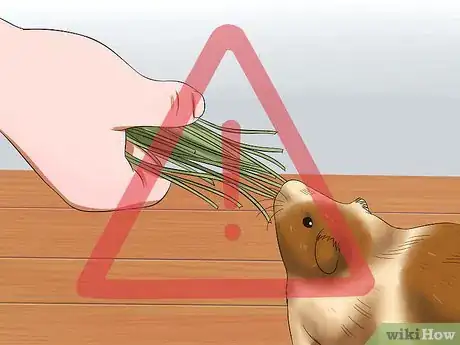
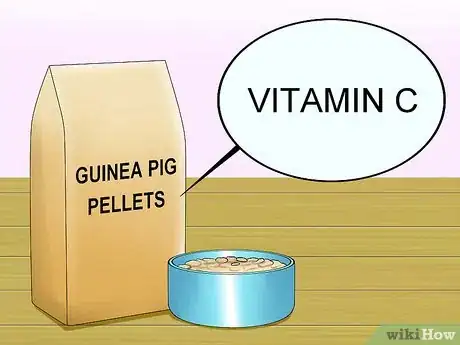
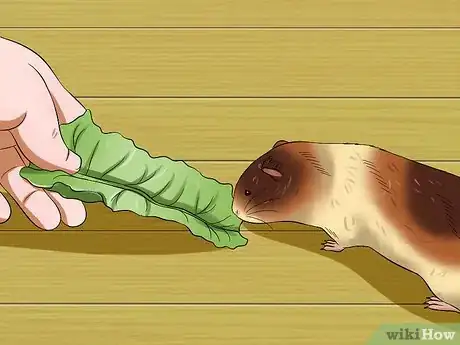
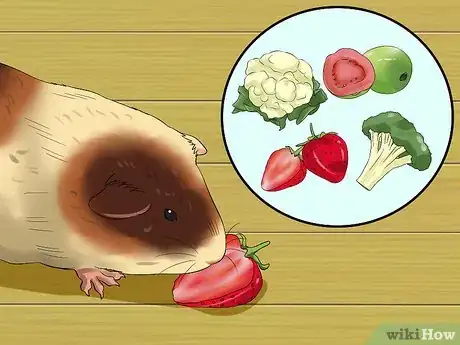
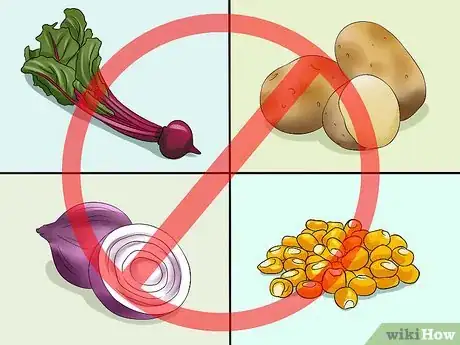
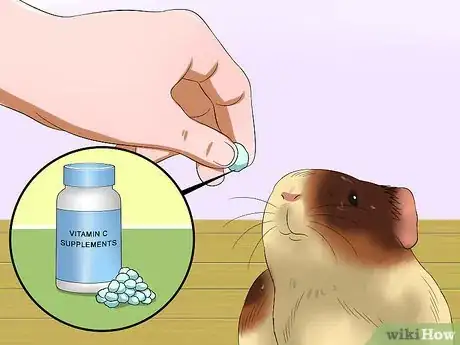
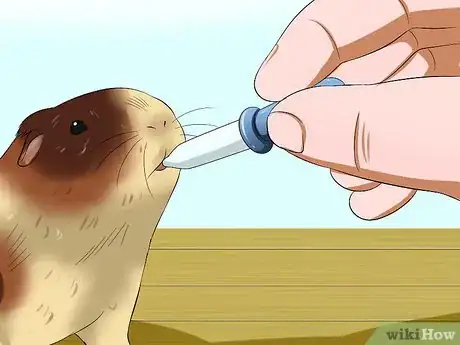


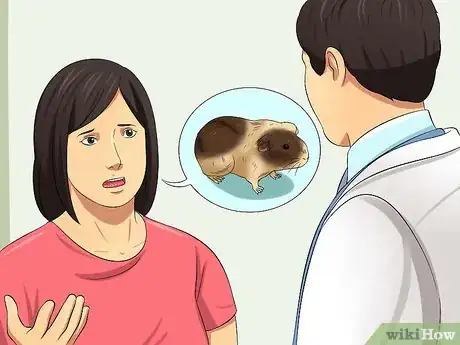










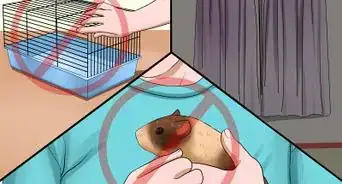


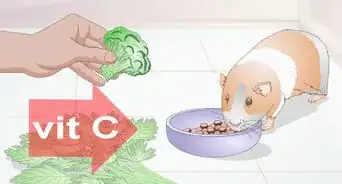











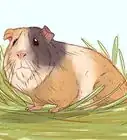






































Medical Disclaimer
The content of this article is not intended to be a substitute for professional medical advice, examination, diagnosis, or treatment. You should always contact your doctor or other qualified healthcare professional before starting, changing, or stopping any kind of health treatment.
Read More...